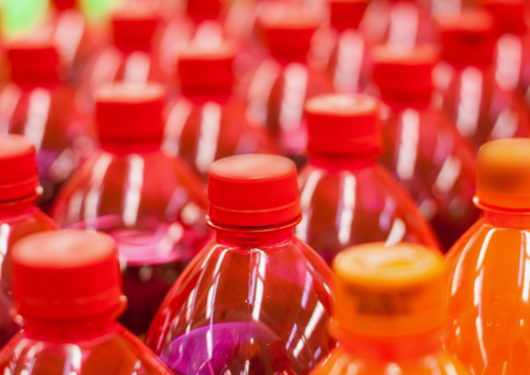
Visit Our Sponsors |
|
|
|
|
|
|
|
|
|
|
|
|
|
|
|
|
|
|
|
|
|
|
|
|
|
|
|
|
|
|
|
|
|
|
|
|
|
|
|
|
|
|
|
|
|
|
|
|
|
|
|
|
|
|
|
|

How much do you care about the scourge of plastic waste, and how much more might you pay for a bottled drink in order to reduce it? We may be about to find out.
The cost of brand new polyethylene terephthalate, or virgin PET (the stuff used to make plastic containers and fibers for clothing), fell below the cost of recycled PET earlier this year, according to a report published last week by S&P Global Platts. It could well stay there for a while, and that might test bottle-makers’ resolve to boost the share of recycled plastic in their products.
This premium on recycled material is new. Platts has collected prices for both types of material back to early 2008 and this is the first year that the recycled stuff has been more expensive than the new stuff. There’s simply too much virgin PET available and not enough recycled material.
The flood of natural gas and light petroleum liquids coming out of the U.S. shale deposits, and the avalanche of new ethylene crackers that turn it into plastic, have contributed to the collapse in the price of virgin PET. China’s 2018 ban on the importing of mixed waste, meanwhile, has led to a relative shortage of recycled PET.
Manufacturers of plastic bottles still prefer the recycled alternative because their customers (mainly the big soft-drinks companies) have promised the people who buy their beverages that they’ll use more of it. But, before now, this was supported by the economics too.
The price of new PET spiked last year as a series of processing plant shutdowns crimped supply. But that production came back online in the fall and, together with a wave of new capacity in Asia, created a surge in supply. Prices fell, not helped by the mediocre summer weather in Europe, which meant there was less demand from bottle-makers there. That demand weakness affected recycled material too, but supply constraints kept its prices high.
The U.S. shale boom has yielded vast quantities of petrochemicals feedstock and the supply won’t dry up any time soon, putting constant downward pressure on the price of new plastic. Production of ethane (a major feedstock for plastic) reached 1.9 million barrels a day in March, according to the U.S. Energy Information Administration, almost double what it was in 2012. It’s set to rise by another 500,000 barrels a day next year.
That boom has had a dramatic impact on prices. Ethane moved in parallel with crude oil until after the 2008 financial crisis, when it lagged behind the subsequent oil price recovery. The shale boom triggered another fall in ethane’s pricing relative to crude.
Makers of plastic sheet and film who use PET as a raw material are already switching back to the new stuff, according to the Platts report, though bottle-makers will need to tread carefully. The inclusion of more recycled material in plastic products has been driven by consumer pressure and legislation, as well as the economics.
Switching back to virgin PET in bottle-making may require some packaging redesign too, the report’s authors write. As such, it might not make much sense to change manufacturing processes to respond to a price change that could be reversed with the creation of more capacity to make recycled PET.
Nevertheless, that new capacity can’t come too soon. If recycled PET remains more expensive than virgin material, its use may become economically unsustainable — unless consumers are happy to pay more to drink from a recycled bottle.
RELATED CONTENT
RELATED VIDEOS
Timely, incisive articles delivered directly to your inbox.







